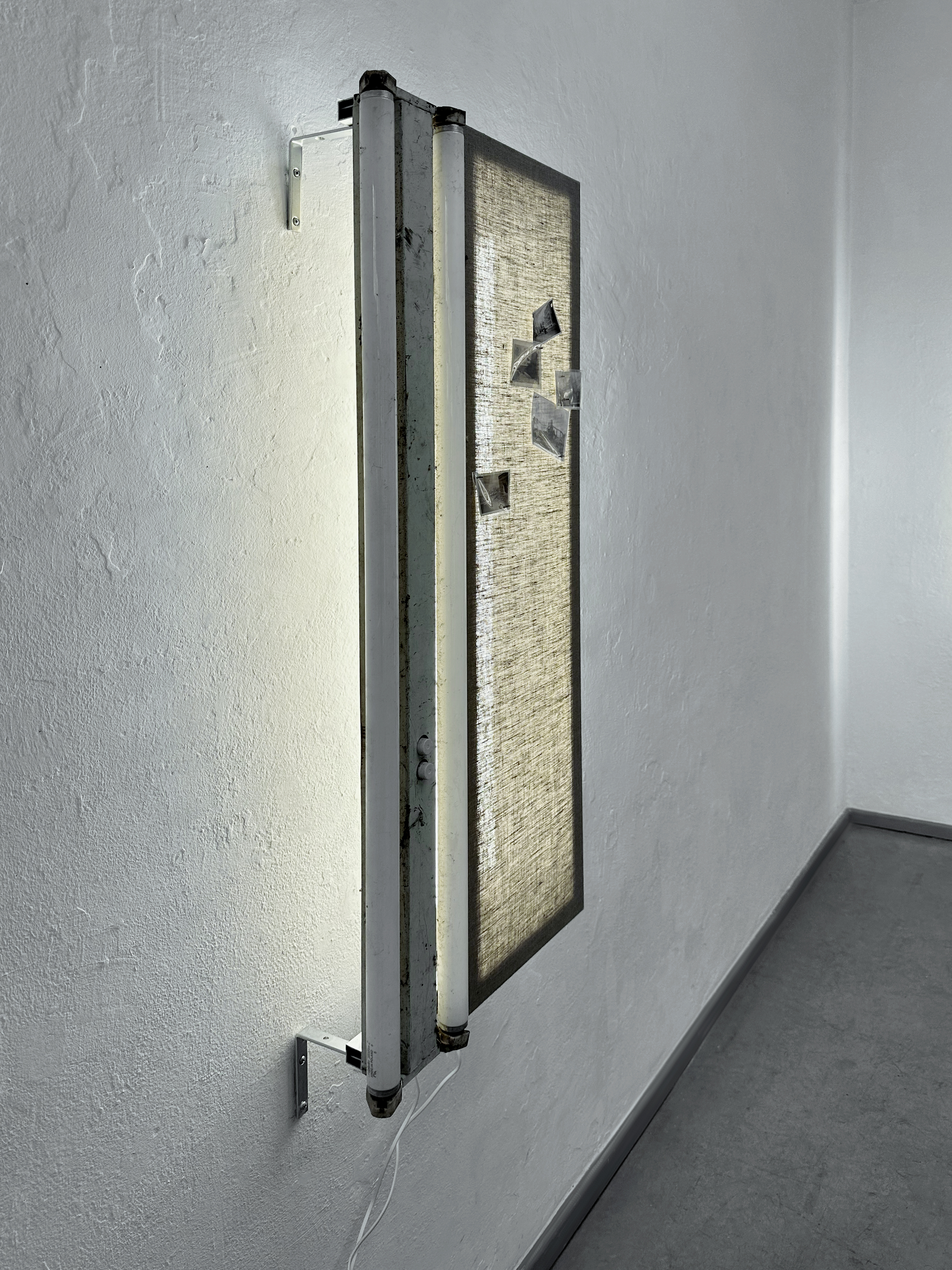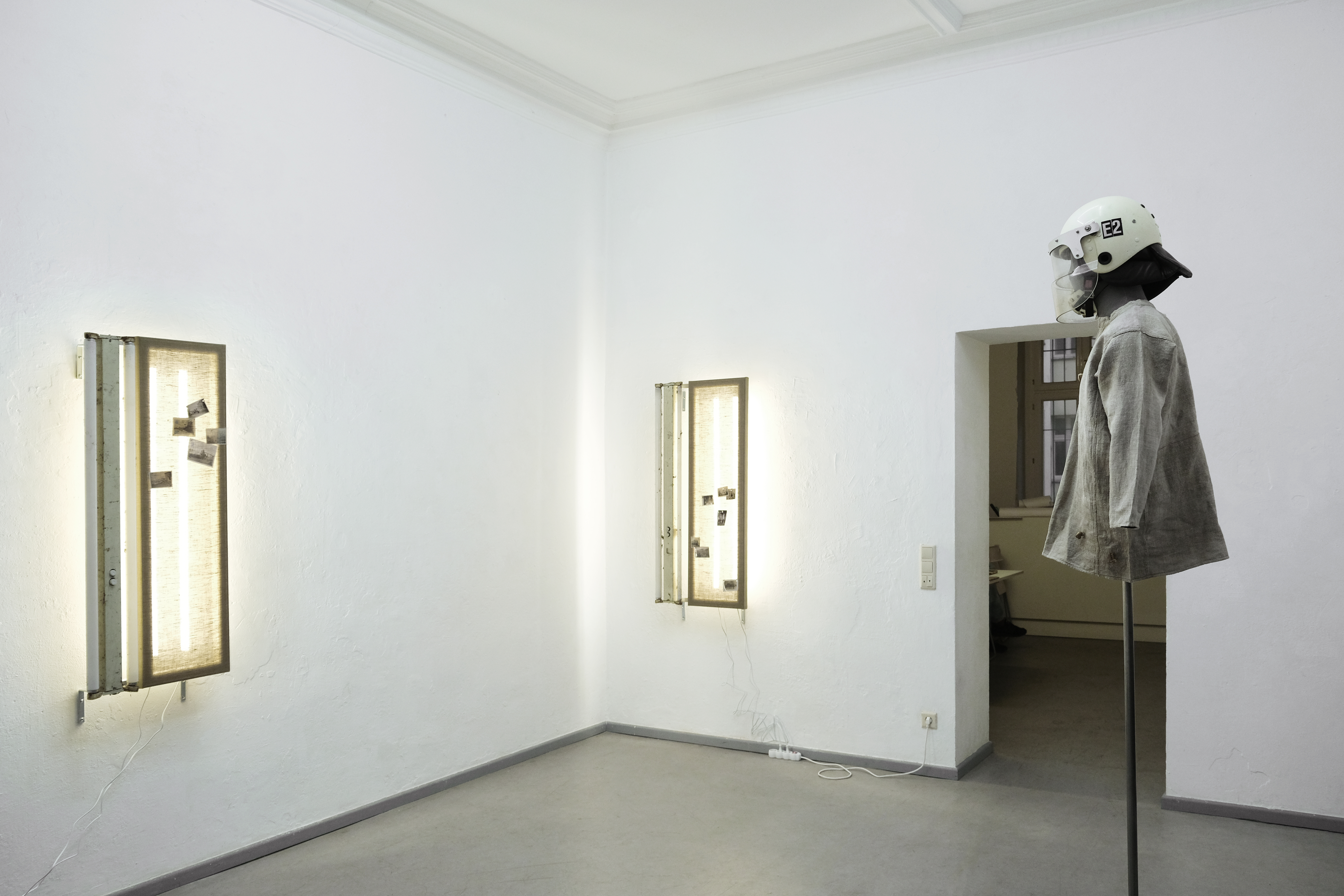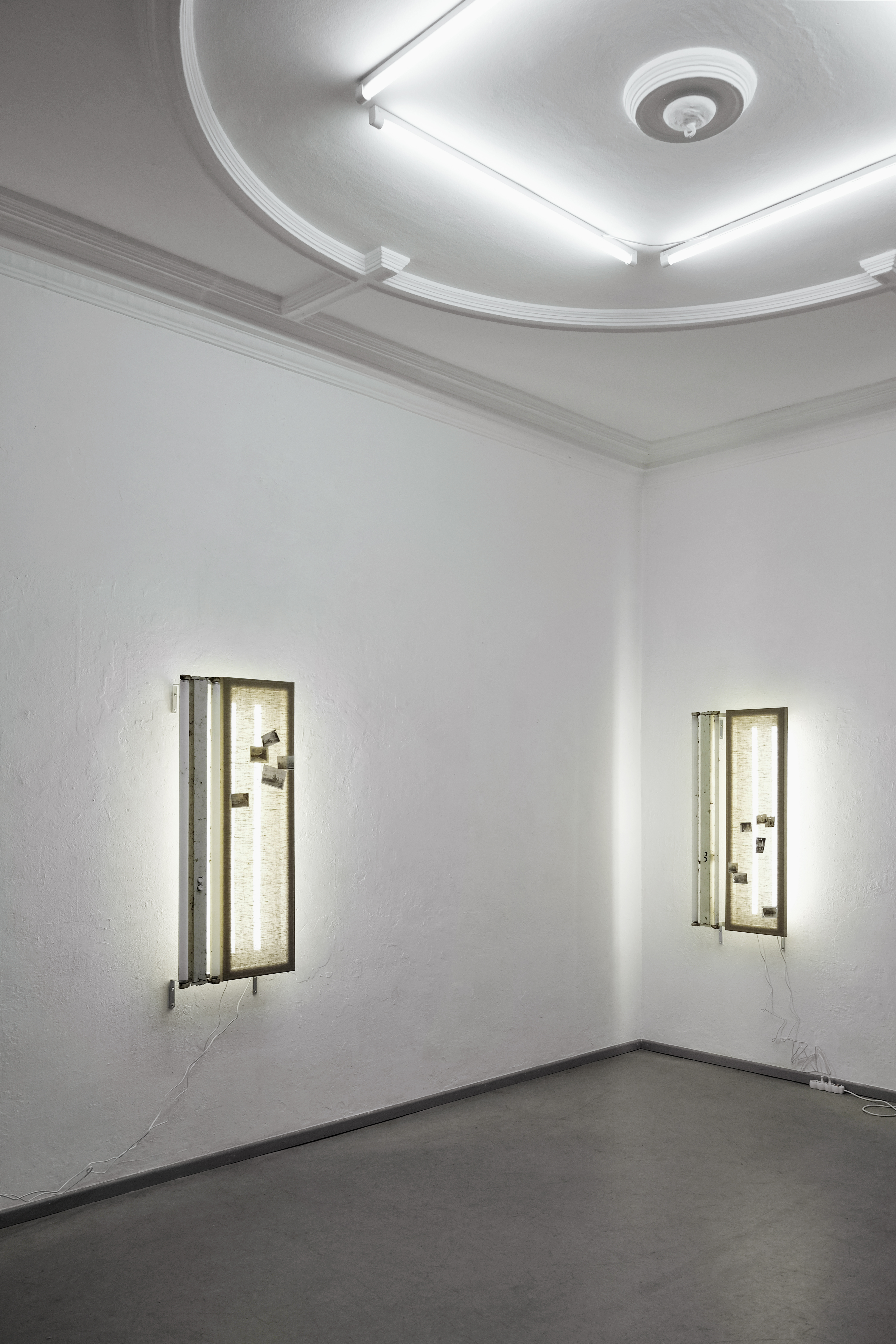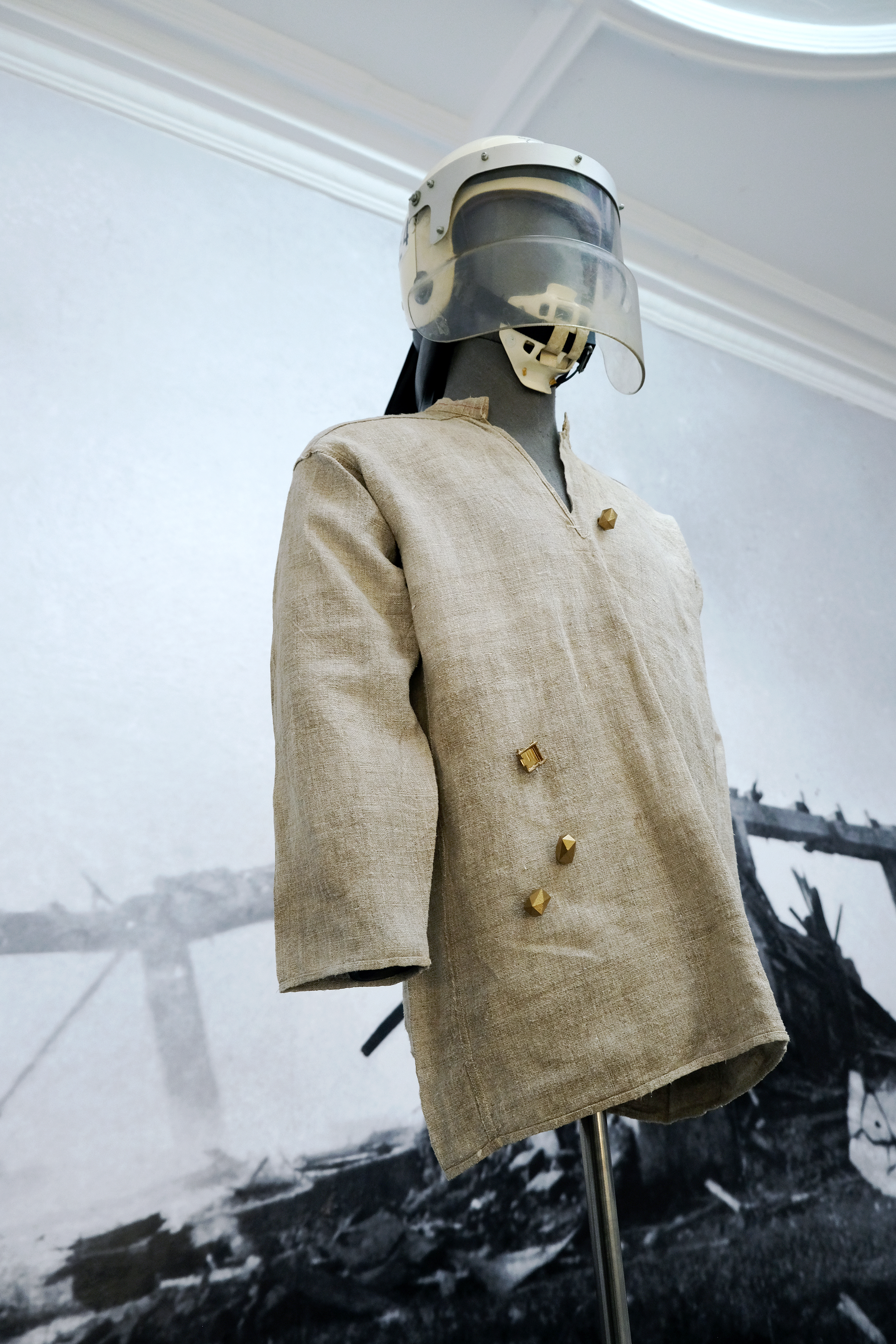Ruins of Belarus
On view: November 9 – November 28, 2024 (daily 12 am – 6 pm)
UQBAR. Schwedenstraße 16, 13357 Wedding, Berlin
Katharina von Hagenow (curator)
Uladzimir Hramovich (Artist)
Lesia Pcholka (Project coordinator, VEHA Archive)
Julia Kochanek (editor)
Diana Thun (translator EN)
An exhibition by Uladzimir Hramovich in collaboration with the VEHA Archive
Ruins make time visible; they signify both memory and the present. Even if their architecture has lost its functional and representative meaning to decay or destruction, their reception is an indication of the contemporary political climate. For Uladzimir Hramovich, materials such as concrete, stone, metal, paper, and color are not just surfaces that reveal traces of history but agents that actively influence it through their presence.
In his artistic work, Hramovich examines ideologies and political movements, using documentary material as a point of departure. In Berlin, cut off from his sources in Belarus on account of his forced exile, he discovered eBay kleinanzeigen for his research. Among other things, he bought a series of pictures from the period of the German occupation of Belarus from 1941 to 1944. The pictures depict destroyed buildings and were taken by German soldiers, eventually winding up in private family archives. The photographs taken by the occupying forces present a perspective that differs widely from the heavily censured Soviet image politics. Hramovich stages the pictures in an installation that resembles the classic display of a local history museum.
The play of perspectives and the quirky presentation of the objects is brought to new heights in his installation “Ruins of Belarus.” While researching online, Hramovich’s algorithm pointed him to relics from the GDR (German Democratic Republic, or in German DDR) that were sold on eBay as nostalgic souvenirs. Among these relics is the GDR police helmet on display here, which reminds Hramovich of the brutal violence with which the regime in Belarus persecutes anyone who does not follow the dominant ideology. He juxtaposes the helmet with a traditional Belarusian linen shirt, evoking an eerie feeling of familiarity and repulsion at once. He also “reconstructed” cats made of plastic, an iconic toy from the former GDR and Poland, in his own manic way: on each cat, Hramovich replaced one paw with the arm of a Soviet monument that commemorates the Great Patriotic War. In this exhibition, he creates a familiar museum setting that also engages with uncanny associations of bodies. Fascinating as they are, these bizarre combinations induce a feeling of profound discomfort.
Hramovich’s technique can be read as a speculative restauration of fragments of various periods, contexts, and ideologies. His manipulated objects are an attempt to reconstruct his own history, and to propose an alternative narrative to hegemonic historic discourses.
After the exhibition closes, the pictures will join the eponymous collection “Ruins of Belarus” of the independent VEHA Archive.
We thank the team at Air Berlin Alexanderplatz for inviting us to Projektraum Uqbar and the German Marshall Fund for supporting this exhibition.
Photos: Lesia Pcholka














